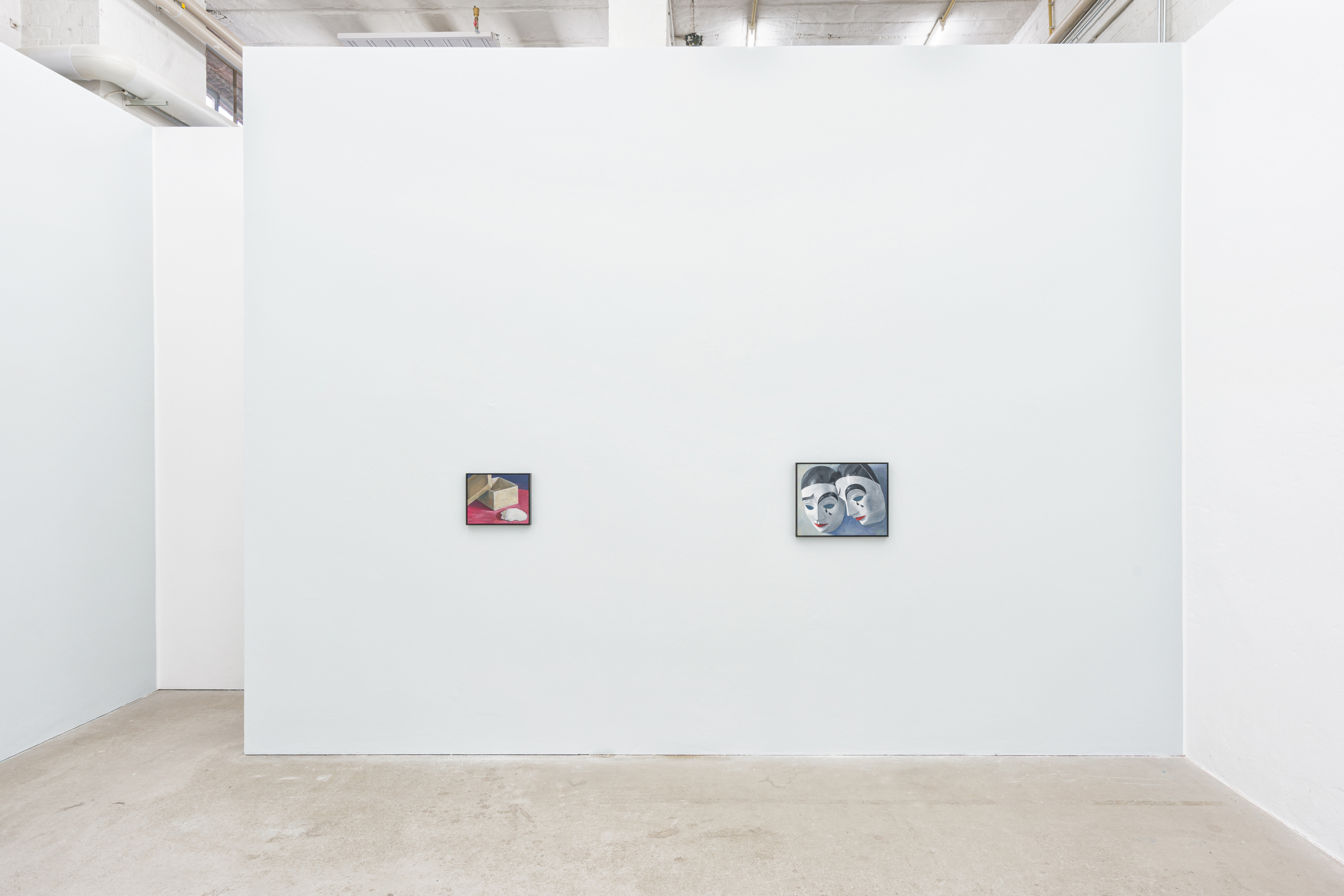
Installation view: Oskar Schmidt, 'Paintings from the Cold', September 17 – October 29, 2022, Galerie Tobias Naehring, Leipzig
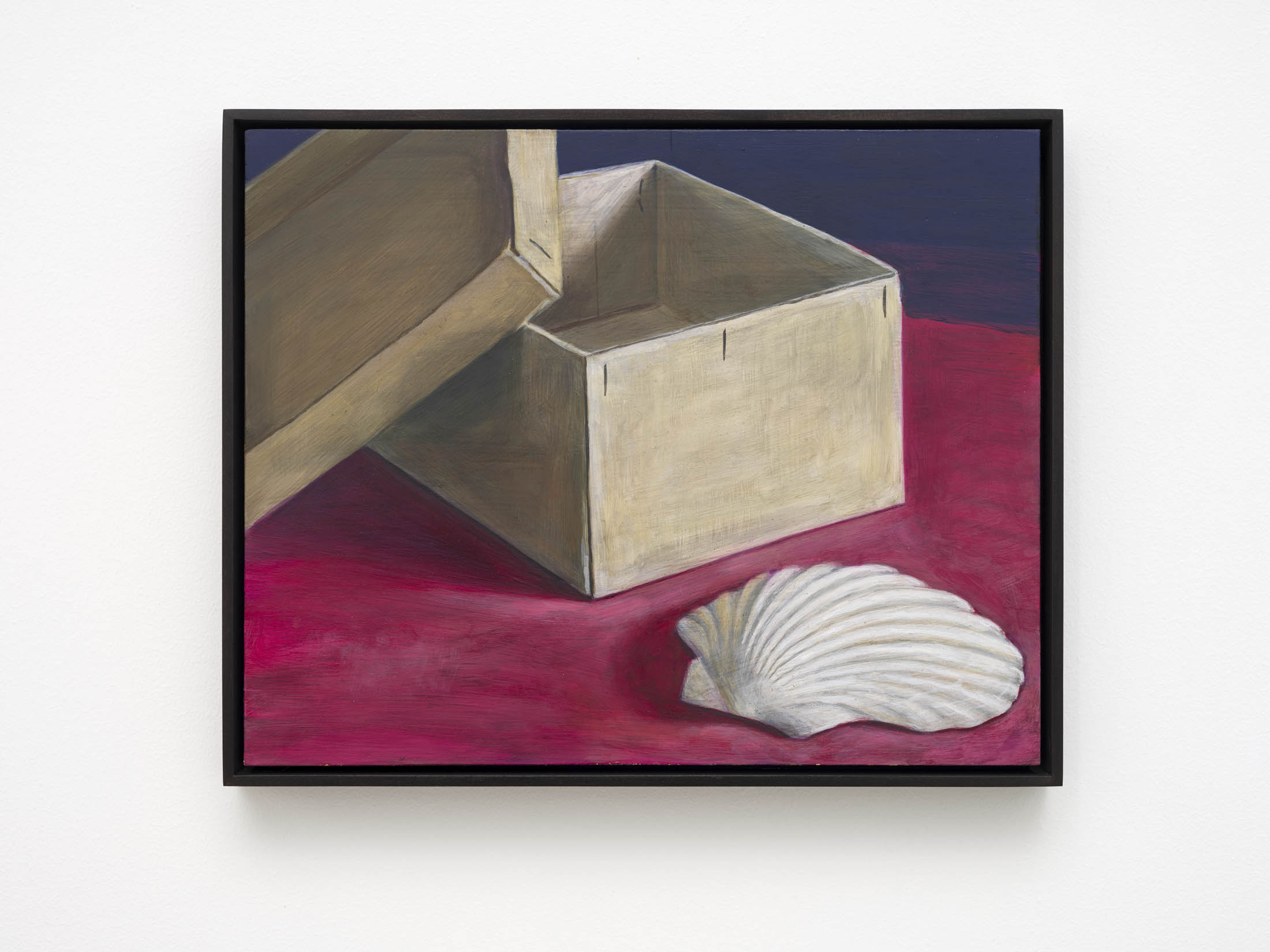
Oskar Schmidt, 'Stillleben mit Karton und Muschel', 2021/22, Oil and egg tempera on wooden panel, 27,5 × 34,5 cm
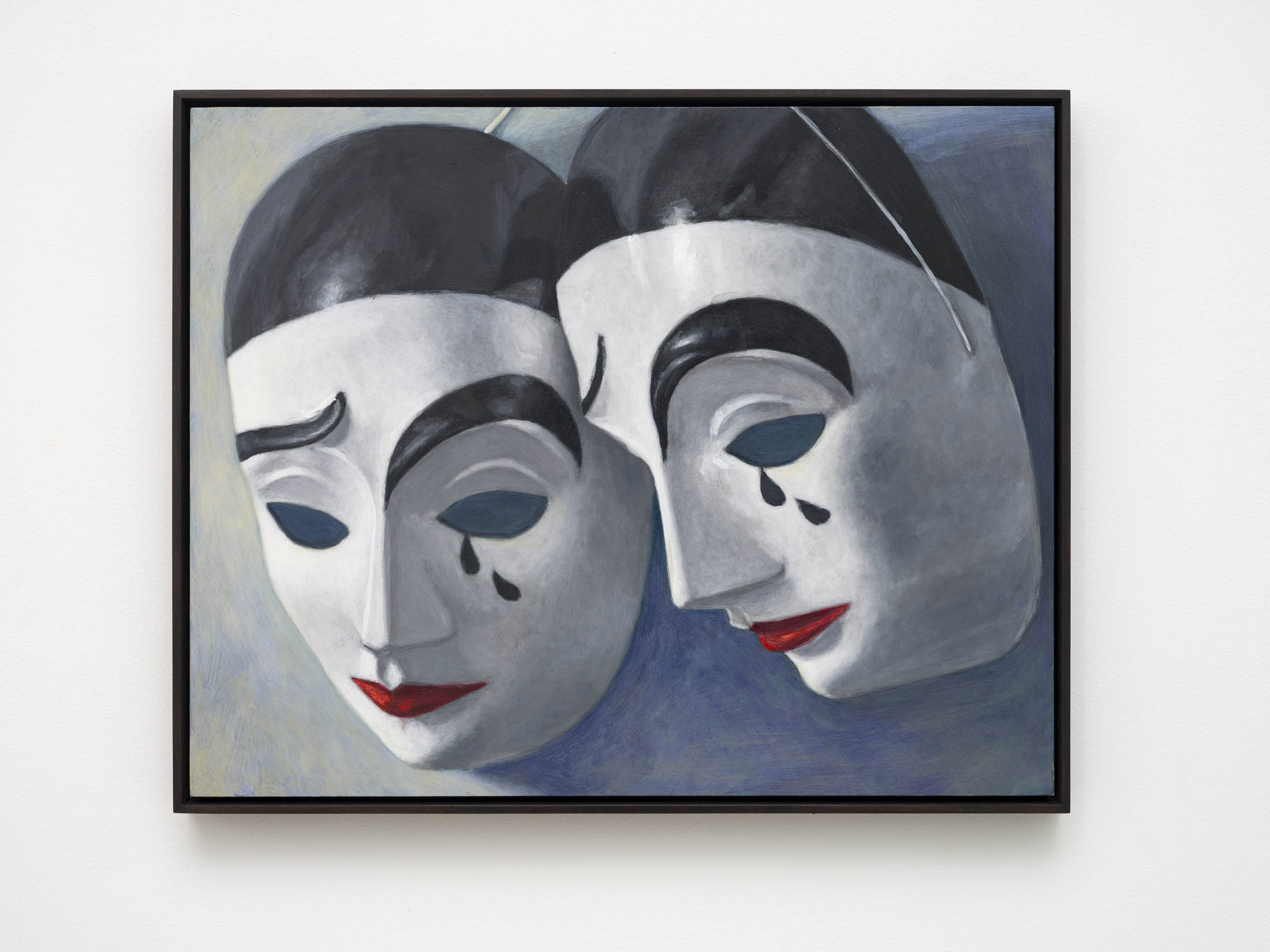
Oskar Schmidt, 'Zwei Masken, 2022', Oil and egg tempera on wooden panel, 40 × 50 cm
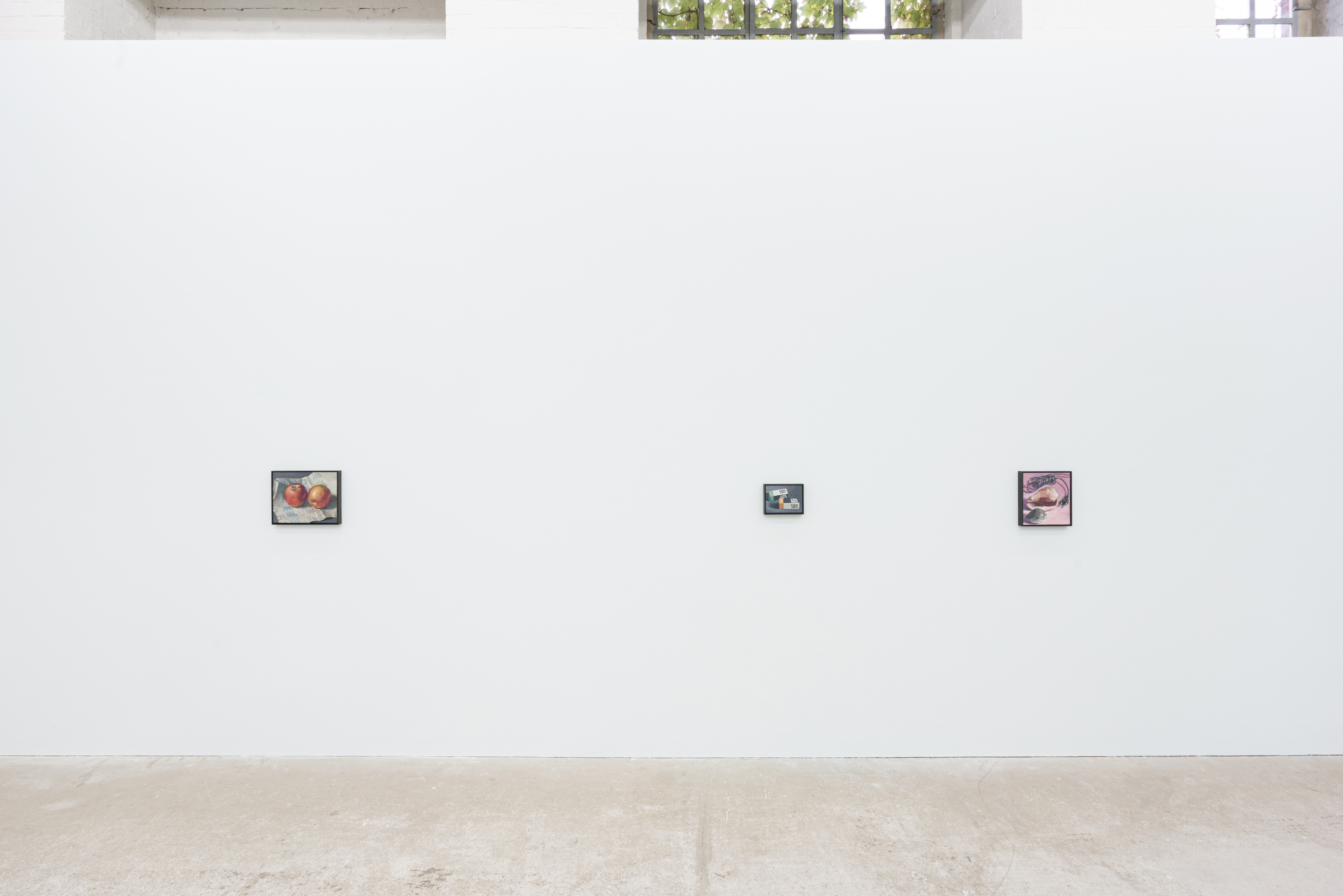
Installation view: Oskar Schmidt, 'Paintings from the Cold', September 17 – October 29, 2022, Galerie Tobias Naehring, Leipzig
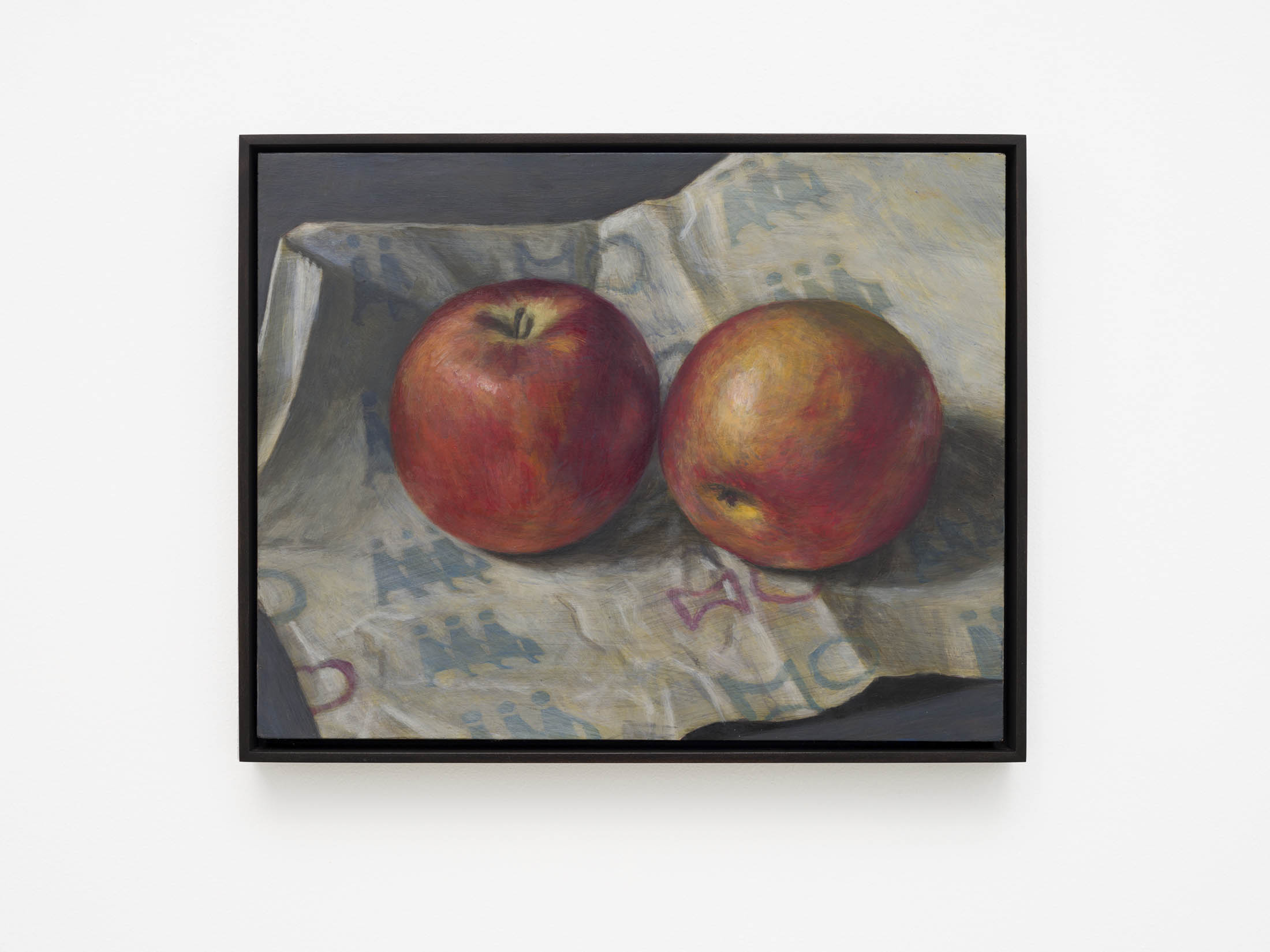
Oskar Schmidt, 'Äpfel auf HO-Papier', 2022, Oil and egg tempera on wooden panel, 28 × 35,5 cm
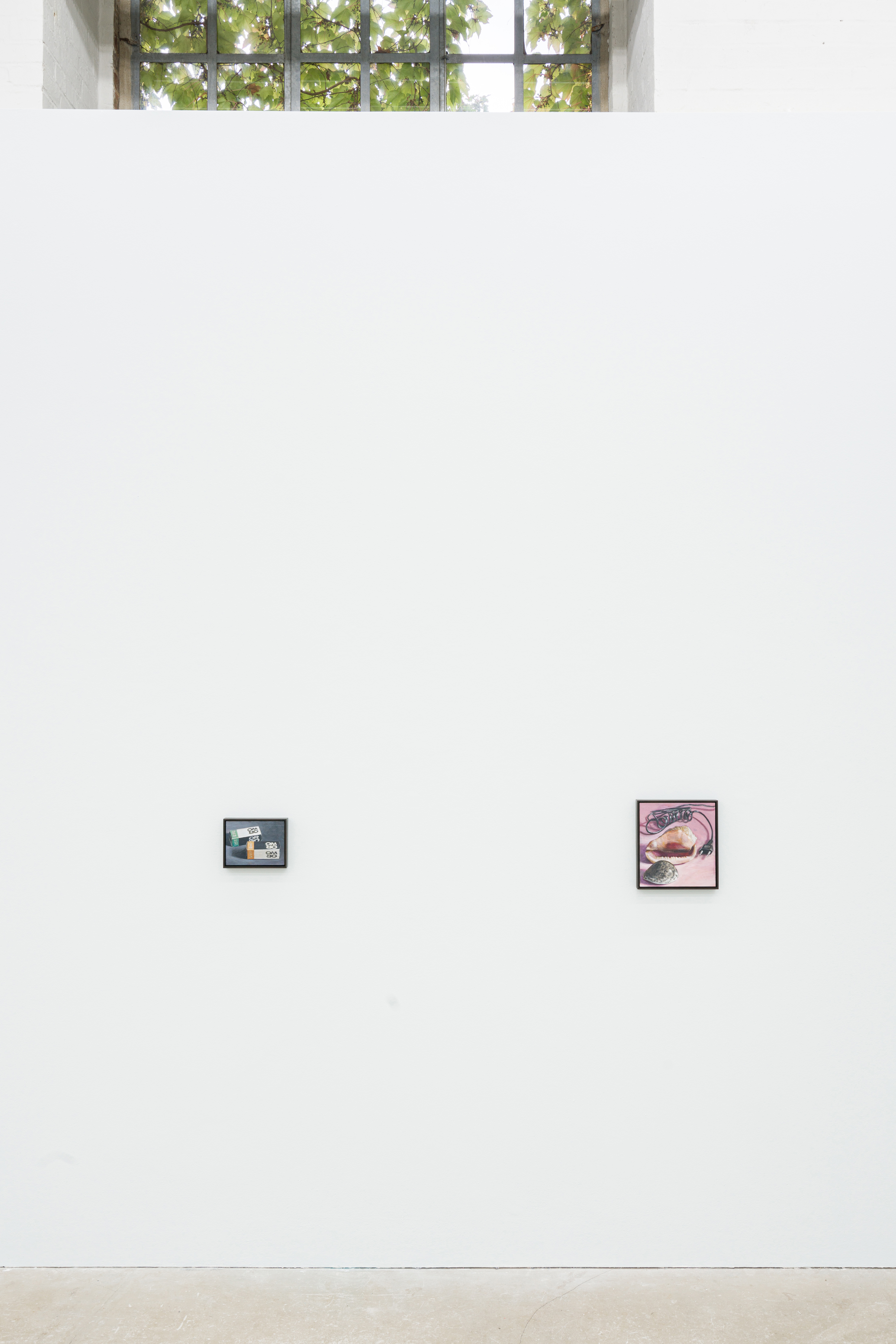
Installation view: Oskar Schmidt, 'Paintings from the Cold', September 17 – October 29, 2022, Galerie Tobias Naehring, Leipzig
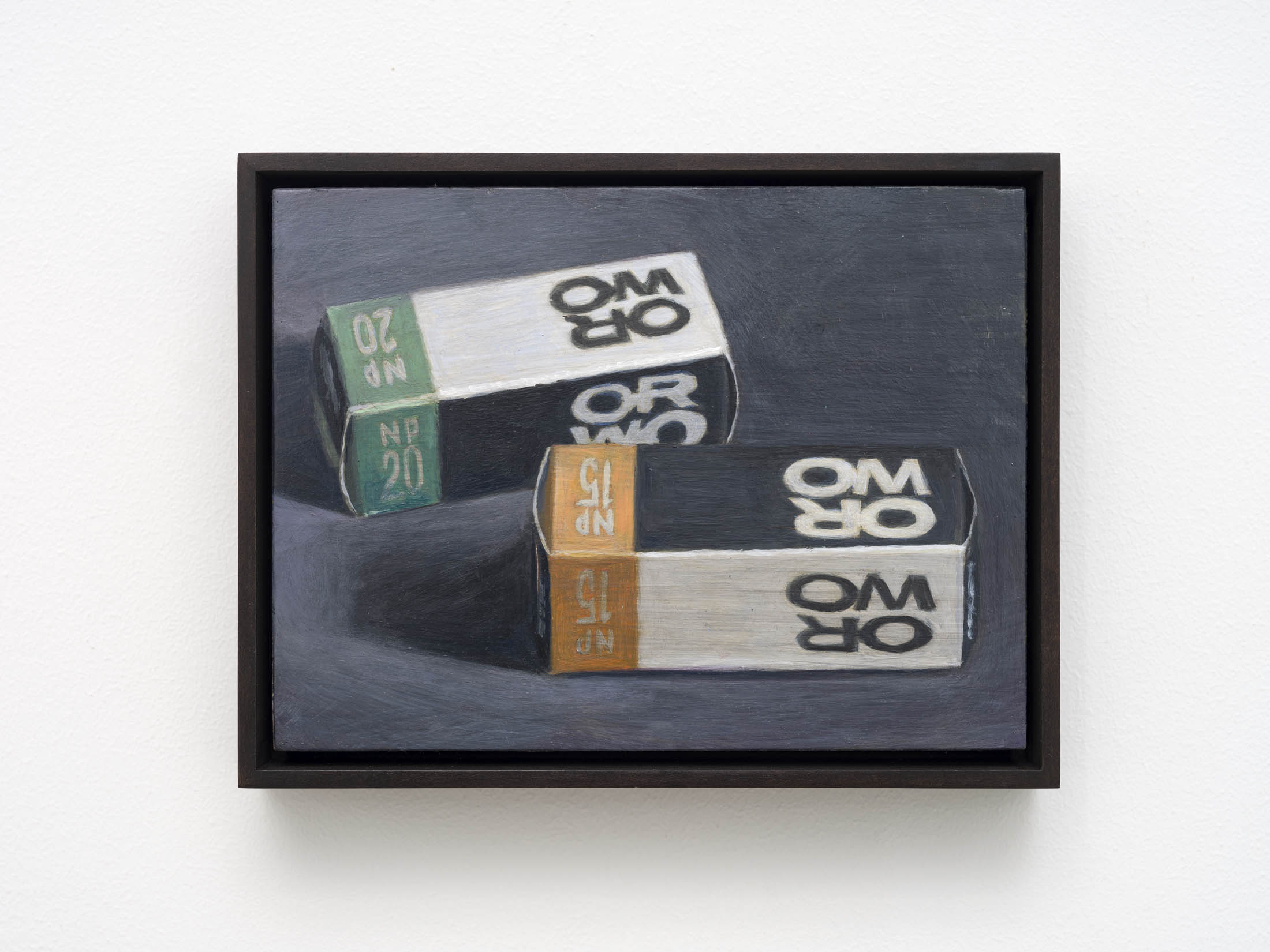
Oskar Schmidt, 'Stillleben mit ORWO-Schwarzweiß-Filmen (VEB Fotochemisches Kombinat Wolfen)', 2022, Oil and egg tempera on wooden panel, 15 × 20 cm
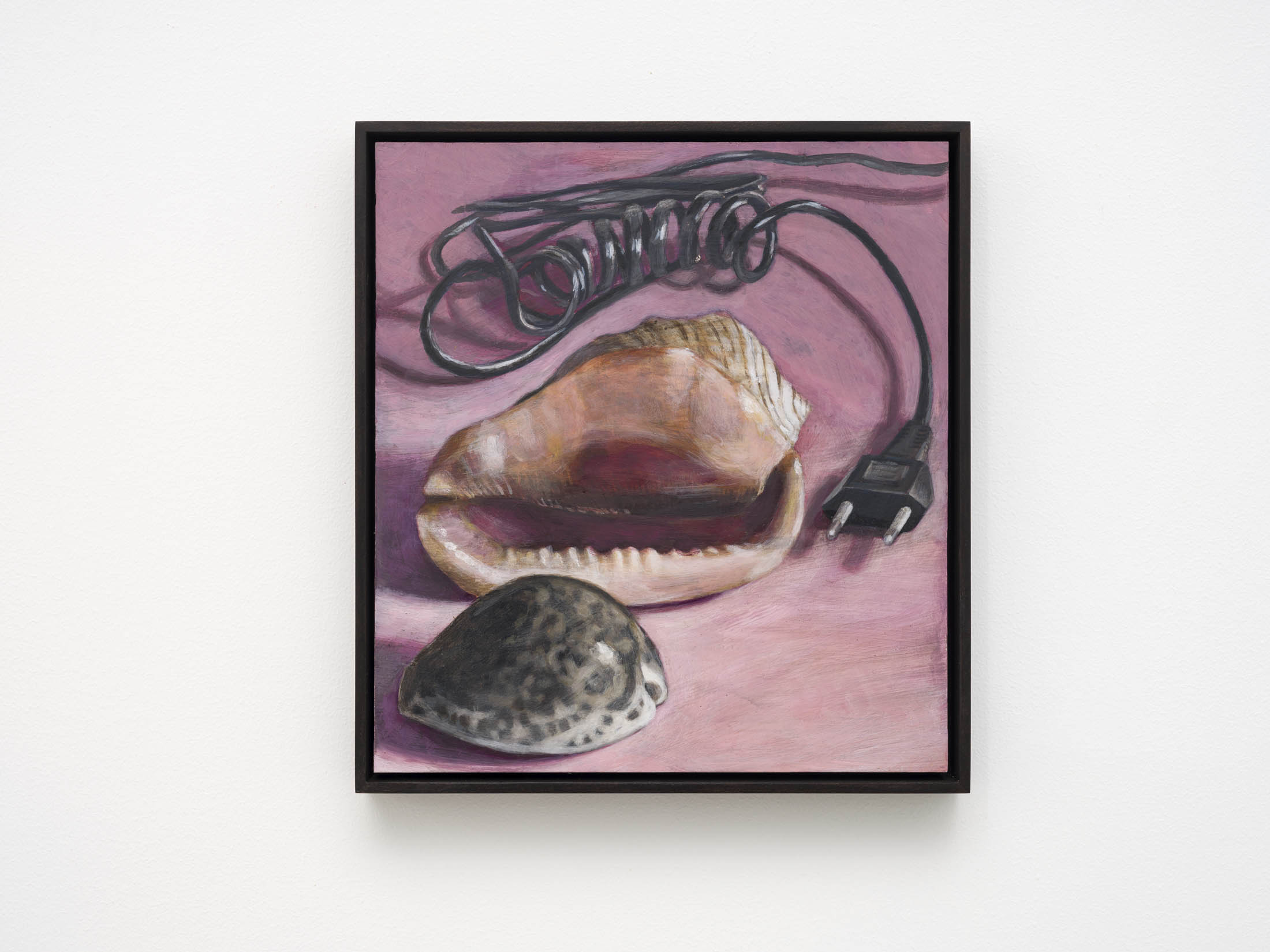
Oskar Schmidt, 'Stillleben mit zwei Muscheln und Elektrokabel', 2022, Oil and egg tempera on wooden panel, 25,5 × 28,5 cm
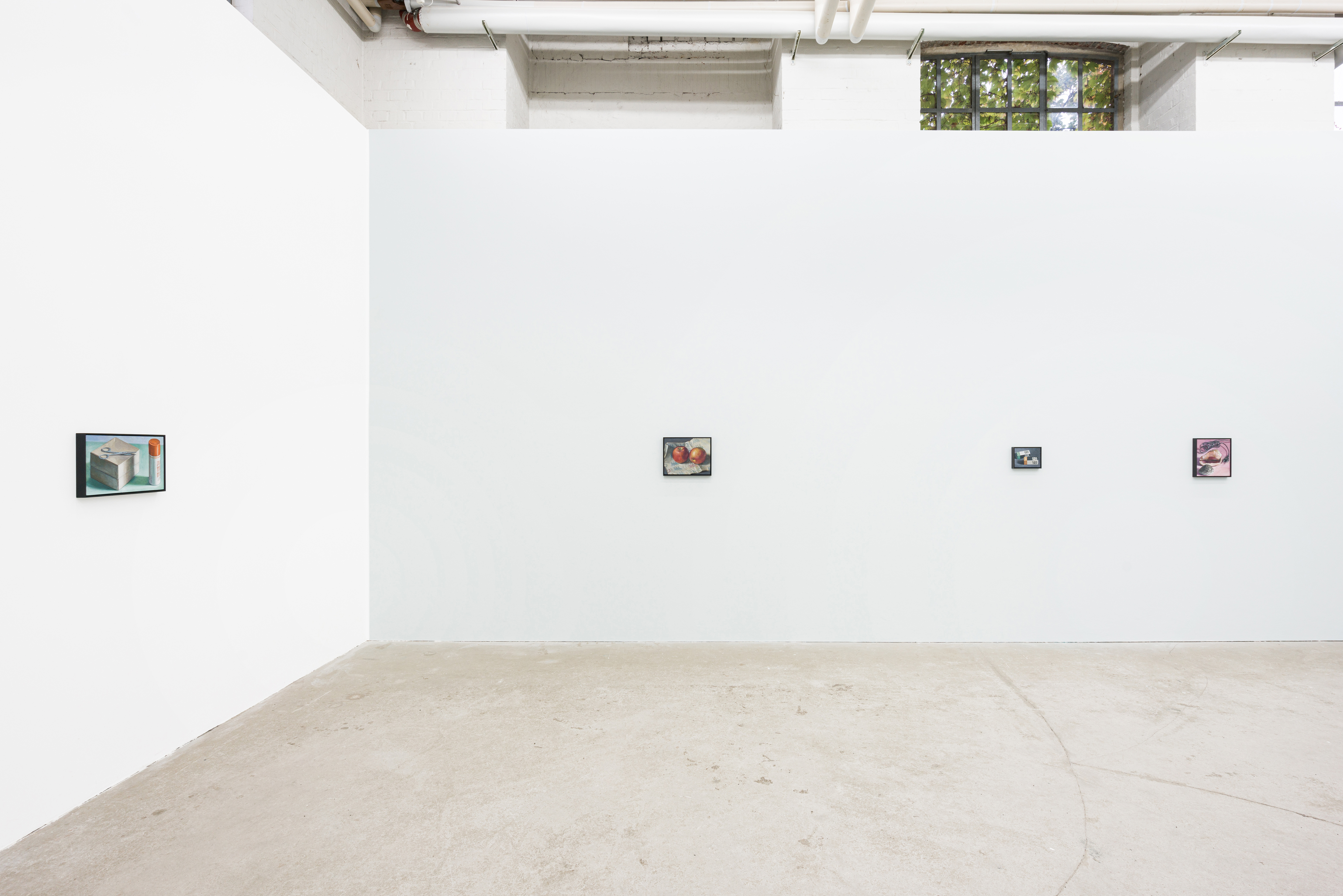
Installation view: Oskar Schmidt, 'Paintings from the Cold', September 17 – October 29, 2022, Galerie Tobias Naehring, Leipzig
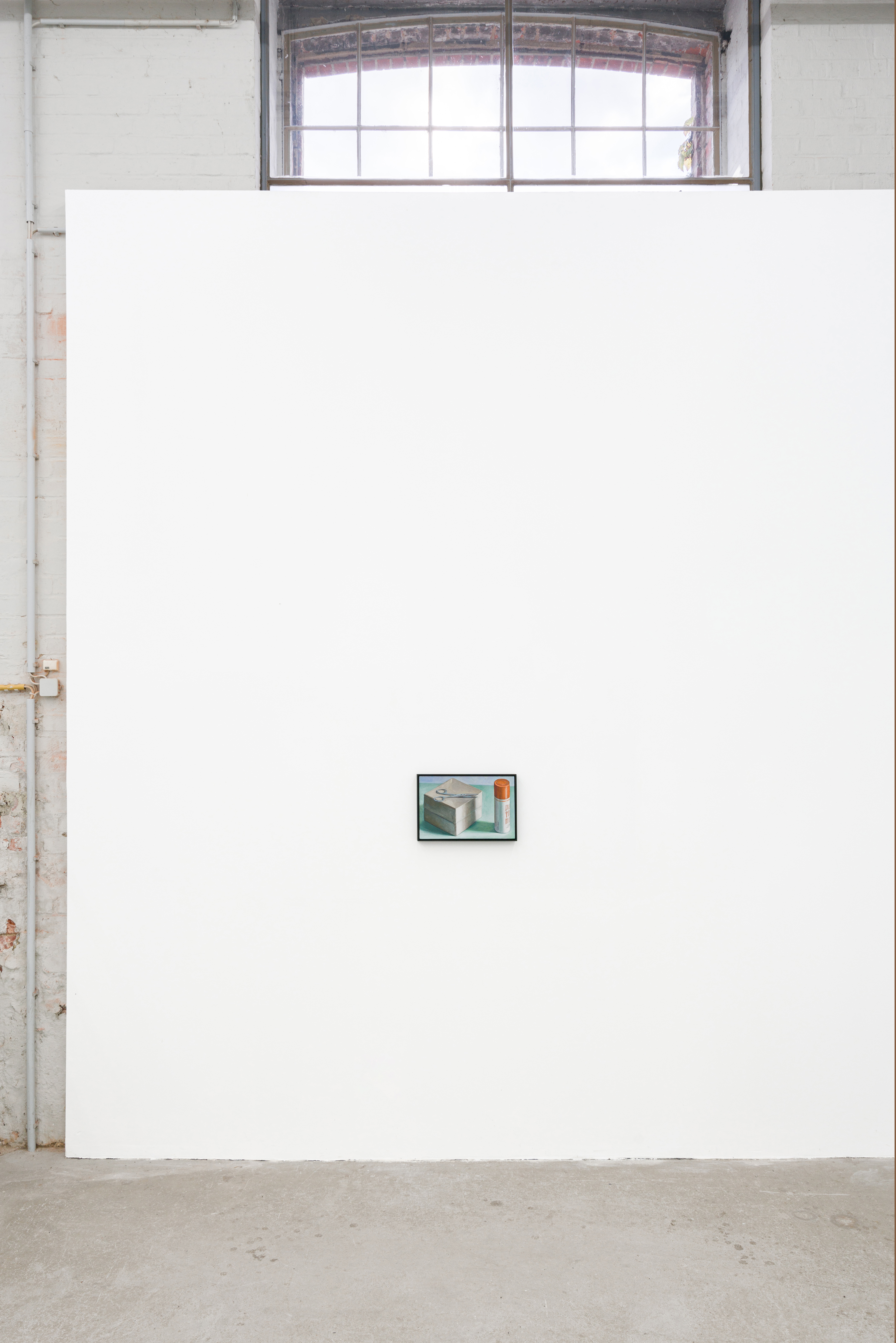
Installation view: Oskar Schmidt, 'Paintings from the Cold', September 17 – October 29, 2022, Galerie Tobias Naehring, Leipzig
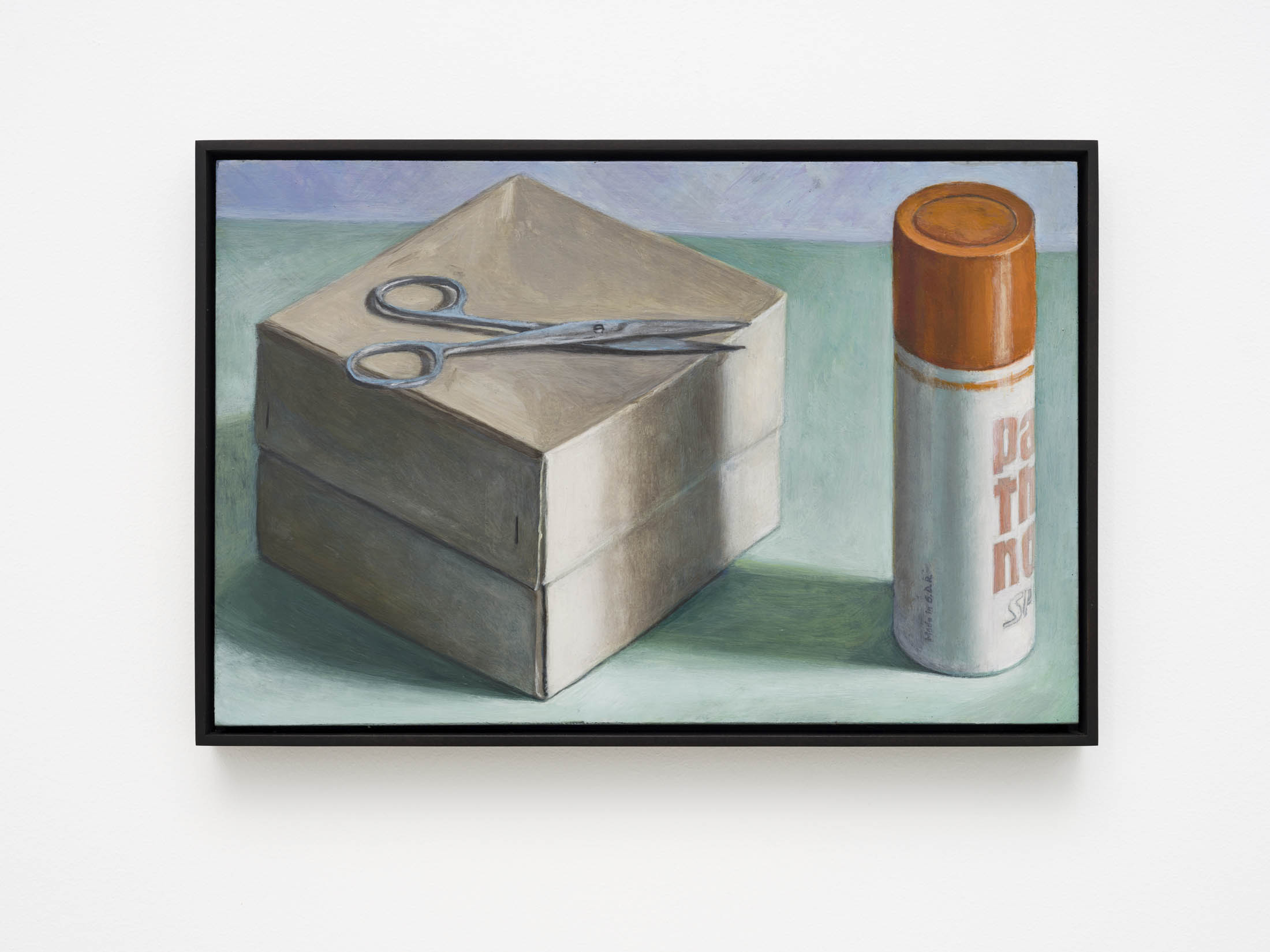
Oskar Schmidt, 'Stillleben mit Karton, Schere und Panthenol Spray (VEB Ankerwerk Rudolstadt)', 2021/22, Oil and egg tempera on wooden panel, 25,5 × 39 cm
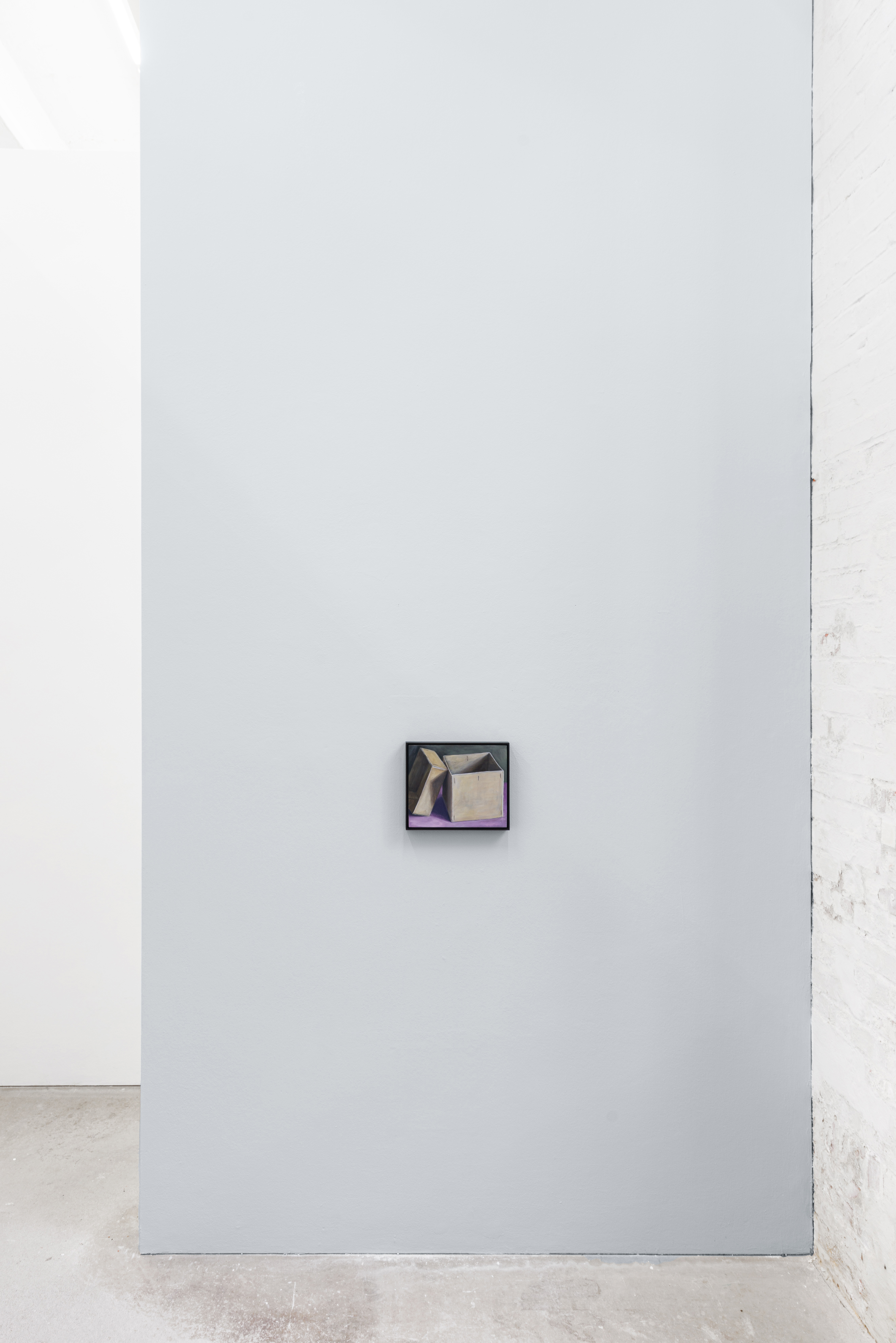
Installation view: Oskar Schmidt, 'Paintings from the Cold', September 17 – October 29, 2022, Galerie Tobias Naehring, Leipzig
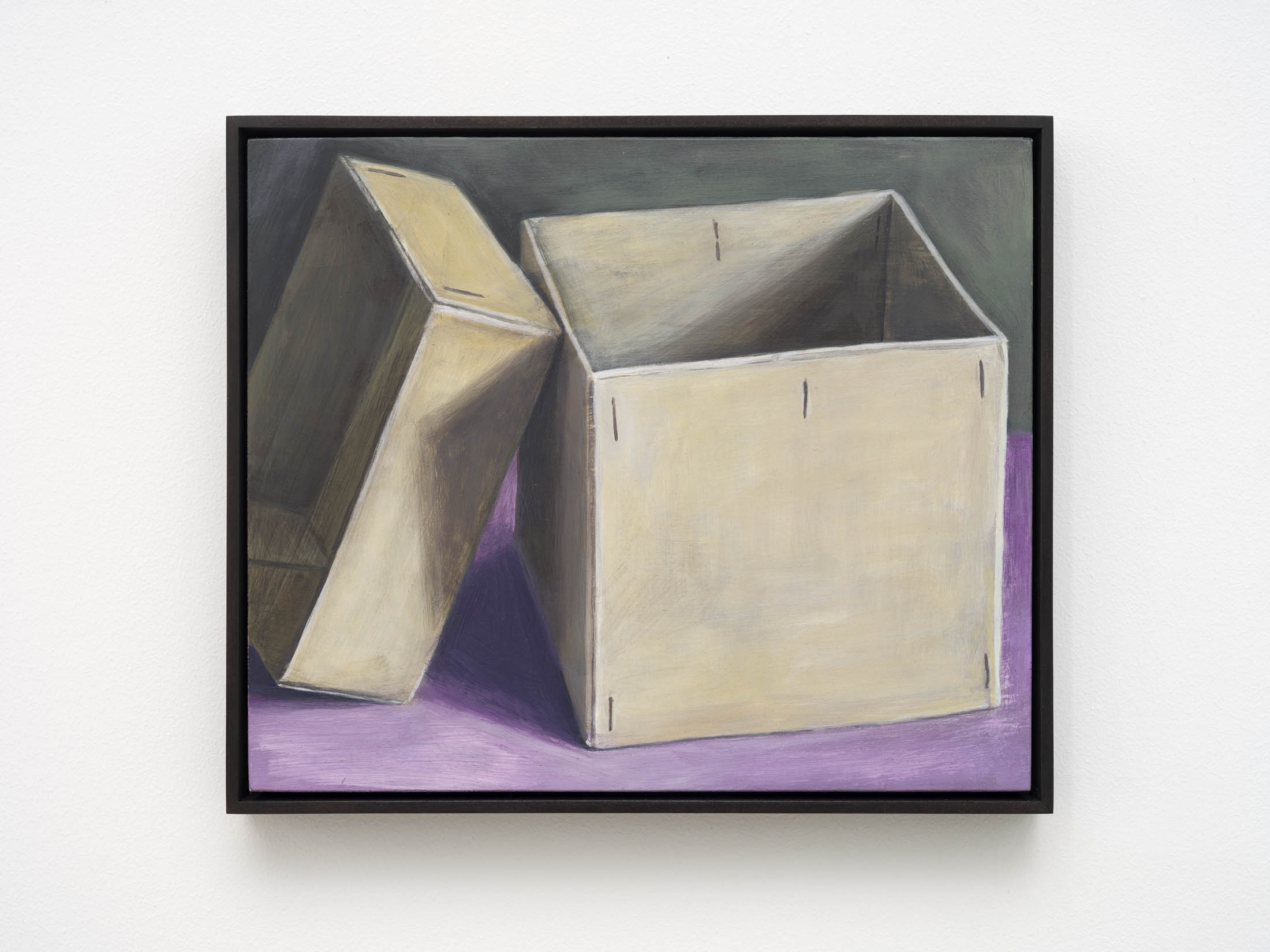
Oskar Schmidt, 'Stillleben mit Karton', 2021/22, Oil and egg tempera on wooden panel, 25 × 30 cm
Paintings from the Cold
EN
The Paintings from the Cold series (2021–ongoing) is an encounter with a lost visual world. For those who once needed film for their cameras or shopped for everyday goods in the socialist state of East Germany (GDR), the ORWO brand of black-and-white film and HO packaging paper in these paintings will be instantly recognizable, part of the reality of their former lives. Those viewers whose lives didn’t include these objects, as is likely the case with Oskar Schmidt’s current exhibition for the Böttcherstraße Art Prize at the Kunsthalle Bremen, will remain shut out to a certain extent from intuitively understanding the iconography of the world from that era.
Oskar Schmidt, born in 1977 in Erlabrunn, East Germany, has created a series of paintings in which he gathers personal memories of his child hood and his origins in the form of Panthenol spray cans, domal glass cleaner, or editions from Reclam’s Universal Library. Two black-and-white masks also feature in the series—a classic symbol of the dual fronts that citizens of East Germany had to adopt in their outward-facing and private lives.
In order to confront this lost state, Schmidt returned to painting for the first time since his studies at the Academy of Fine Arts Leipzig (HGB). Photography, his primary artistic medium, played an important role in the process as well. Using photographs in which the objects were arranged as still lifes, he created sketches on primed wooden panels upon which he then painted a classical still life true to the real object. The elaborate layering of egg tempera and oil glazes lends the paintings their uniquely luminous surface and characteristic depth.
This painting technique was established by Otto Dix, before generations of painters of the Leipzig School took it up in the 1970s and developed it further. Schmidt regularly visited the wellknown East German painter Gudrun Brüne while working on his revival of the technique for Paintings from the Cold—the passing on of a now-rare painting tradition across generations.
Addressing the experiences and memories of the GDR and reckoning with this past in a reunified Germany means a constant push and pull between the private and the public, the personal and the political. Schmidt’s engagement with the remnants of his bygone world is highly personal, yet the paintings in their individual components inevitably lead into political discourse, exposed as they are to the polarization of various EastWest debates.
Schmidt’s confrontation with the tradition of East German painting is evident not only in the technique of the paintings, but also their style. With their stylistic references to Socialist Realism, these works can also be understood as Anti-Pop Art, but at the same time they elevate the consumer goods of socialism to ascetic icons. They are antagonists to that most recognizable capitalist symbol of all: Andy Warhol’s Campbell’s soup can.
The political dimension of the series becomes particularly clear in “IMI/ATA/FEWA,” a direct pictorial quotation of a painting of the same name by East German painter Ulrich Hachulla from 1990, one year after the fall of the Berlin Wall. What differentiates the two paintings? The thirty two years that lie between them and the sociopolitical, historical, and economic dimensions this adds to Schmidt’s version; the debates about the disregard for art created in the GDR and the waning dominance of Western art narratives, all of which inevitably enter into the consideration of his 2022 work. Schmidt’s paintings become a barometer of societal development since 1990 that also draw attention to the unequal attention economy of Western art centers in contrast to their “periphery.” The series Paintings from the Cold can thus be understood as a look back and forward, transferring in terms of both style and subject what is past and nonetheless unfinished into contemporary painting.
Marlene Militz; Translation: Hilda Hoy
Oskar Schmidt, born 1977 in Erlabrunn, GDR, lives and works in Berlin. He is currently nominated for the Böttcherstraße Art Prize at the Kunsthalle Bremen. Schmidt is a graduate of the Academy of Fine Arts Leipzig (HGB). Recent solo exhibitions have been held at Galerie Tobias Naehring, Berlin (2020); Grisebach, Berlin (2019); Konrad Adenauer Foundation, Berlin (2018); Museum Gunzenhauser, Chemnitz (2017) and Fotomuseum Winterthur (2016). Recent group exhibitions with the artist have taken place at Kunsthalle Bremen (2022); Weserburg Museum für moderne Kunst (2021/22); Sharjah Art Foundation, VAE (2021); Museum of Contemporary Art, Zagreb (2020); Kunstmuseum Moritzburg Halle (2018); Daimler Contemporary, Berlin (2018); Staatliche Kunstsammlungen Dresden (2018); Pivô, São Paulo (2018); National Gallery of Kosovo, Pristina (2017); C/O Berlin (2017) and Center for Creative Photography, Tucson/Arizona (2015).
Paintings from the Cold
DE
Die Gemäldeserie Paintings from the Cold (2021–fortlaufend) ist die Begegnung mit einer untergegangenen Bildwelt. ORWO-Schwarzweiß-Filme und HO-Einschlagpapier sind für diejenigen, die in der sozialistischen DDR einst Filme für ihre Kameras benötigten oder „Waren des täglichen Bedarfs“ einkauften, sofort in den Gemälden identifizierbar – als Teil ihrer ehemaligen Lebensrealität. Betrachter*innen, in deren Leben diese Dinge nicht vorkamen, wie wohl aktuell in Oskar Schmidts Ausstellung zum Kunstpreis der Böttcherstraße in der Kunsthalle Bremen, wird das intuitive Verständnis dieser Ikonografie der damaligen Lebenswelt bis zu einem gewissen Maß unzugänglich bleiben.
Oskar Schmidt, 1977 in Erlabrunn, DDR, geboren, versammelt in seiner Gemäldeserie persönliche Erinnerungen an Kindheit und Herkunft in Form von Panthenol-Spraydosen, domal-Glasreiniger oder Reclams Universal Bibliothek-Ausgaben. Auch zwei schwarzweiße Masken sind Teil der Gemäldeserie – klassisches Sinnbild des Doppelgesichts, das sich DDR Bürger*innen im Offiziellen und im Privaten aneignen mussten.
Um sich mit dem untergegangenen Staat auseinanderzusetzen, wendet sich Schmidt erstmals seit seinem Studium an der Hochschule für Grafik und Buchkunst Leipzig (HGB) wieder der Malerei zu. Wobei sein künstlerisches Hauptmedium, die Fotografie, auch in diesem Prozess eine wichtige Rolle spielt. So zeichnet er ausgehend von Fotografien, auf denen die Gegenstände als Stillleben angeordnet sind, eine Skizze auf die grundierte Holztafel, um aufbauend darauf eine klassische Stilllebenmalerei vom realen Gegenstand zu praktizieren. Durch die aufwändige Schichtung von Eitempera und Öl-Lasuren erlangen die Gemälde ihre einzigartig leuchtende Oberfläche und charakteristische Tiefe.
Diese Maltechnik begründet ihre Tradition auf Otto Dix, bevor Generationen von Maler*innen der Leipziger Schule sie in den 1970er Jahren aufgriffen und weiterentwickelten. Für die Rekapitulation dieser Technik hat Schmidt während seiner Arbeit an Paintings from the Cold regelmäßig die bekannte DDR-Malerin Gudrun Brüne besucht – die transgenerationale Weitergabe einer mittlerweile seltenen Maltradition.
Die Thematisierung von Erfahrungen und Erinnerungen an die DDR sowie deren Aufarbeitung in der wiedervereinigten Bundesrepublik ist stets zwischen dem Privaten und dem Öffentlichen, dem Persönlichen und dem Politischen hin und hergerissen. Die Beschäftigung Schmidts mit den Überbleibseln seiner vergangenen Lebenswelt ist in höchstem Maße persönlich; jedoch münden die Gemälde in ihren einzelnen Bestandteilen unweigerlich in den politischen Diskurs, sind sie doch der Polarisierung verschiedenster OstWest-Debatten ausgesetzt.
Zu erkennen ist die Auseinandersetzung mit der Tradition der DDR Malerei neben der Technik auch im Stil. Schmidts Gemälde könnten auch als Anti-Pop Art verstanden werden, referieren sie doch stilistisch auf den Sozialistischen Realismus, erheben zugleich aber die Konsumgüter des Sozialismus zu asketischen Ikonen. Die werden zu Antagonisten des kapitalistischen Erkennungszeichens schlechthin: Andy Warhols Campbell’s-Dose.
Besonders in dem Gemälde „IMI/ATA/FEWA“ wird die politische Dimension der Gemälde deutlich – ein direktes Bildzitat eines gleichnamigen Gemäldes des DDR-Malers Ulrich Hachulla aus dem Wendejahr 1990. Was ist nun der Unterschied zwischen den beiden Gemälden? Es sind die 32 Jahre, die zwischen ihnen liegen, und die Schmidts Version um soziopolitische, historische und ökonomische Dimensionen erweitern, die durch Debatten über die Geringschätzung von in der DDR entstandenen Kunst und die schwindende Dominanz westlicher Kunstnarrative zwangsläufig in die Betrachtung seines Gemäldes von 2022 einfließen. Schmidts Bilder werden zum Gradmesser der gesellschaftlichen Entwicklung seit 1990, die auch die ungleiche Aufmerksamkeitsökonomie westlicher Kunstzentren im Gegensatz zu deren „Peripherie“ in den Blick nimmt. Somit kann die Serie Paintings from the Cold als ein Blick zurück und nach vorn verstanden werden, indem sie stilistisch wie inhaltlich das Vergangene und doch nicht Abgeschlossene in die zeitgenössische Malerei transferiert.
Marlene Militz
Oskar Schmidt, geboren 1977 in Erlabrunn, DDR, lebt und arbeitet in Berlin. Er ist derzeit für den Kunstpreis der Böttcherstraße in der Kunsthalle Bremen nominiert. Schmidt studierte an der Hochschule für Grafik und Buchkunst Leipzig (HGB). Seine Werke wurden in unterschiedlichen Einzelausstellungen gezeigt, wie in der Galerie Tobias Naehring, Berlin (2020); Grisebach, Berlin (2019); Konrad-Adenauer-Stiftung, Berlin (2018); Museum Gunzenhauser, Chemnitz (2017) und Fotomuseum Winterthur (2016). Schmidt nahm an zahlreichen Gruppenausstellungen teil, u.a. in der Kunsthalle Bremen (2022); Weserburg Museum für moderne Kunst (2021/22); Sharjah Art Foundation, VAE (2021); Museum of Contemporary Art, Zagreb (2020); Kunstmuseum Moritzburg Halle (2018); Daimler Contemporary, Berlin (2018); Staatliche Kunstsammlungen Dresden (2018); Pivô, São Paulo (2018); National Gallery of Kosovo, Pristina (2017); C/O Berlin (2017) und Center for Creative Photography, Tucson/Arizona (2015).